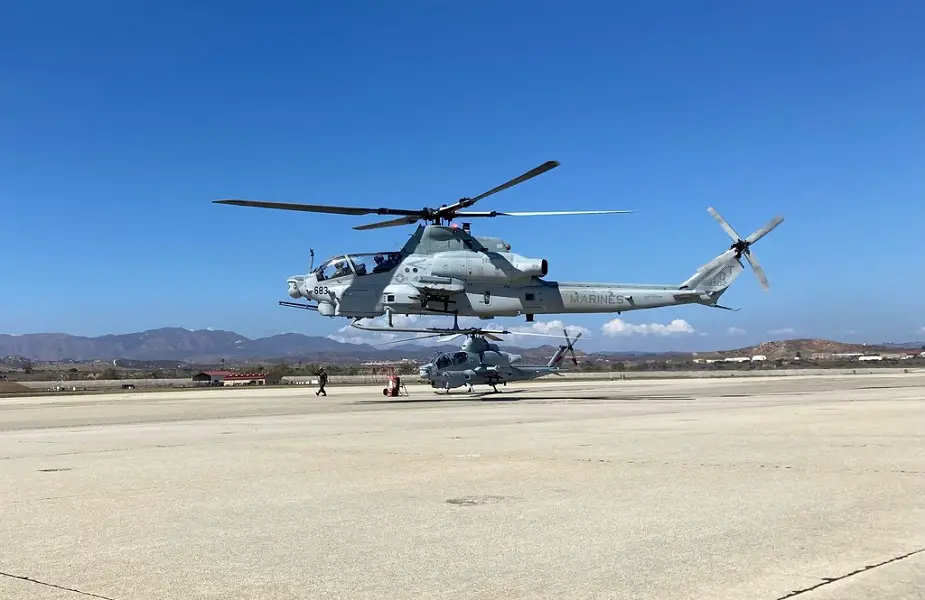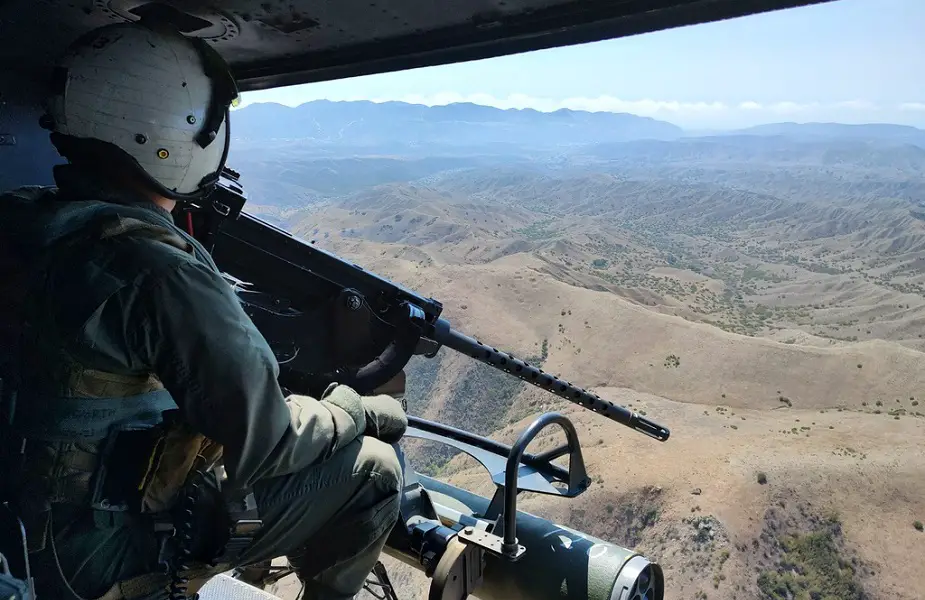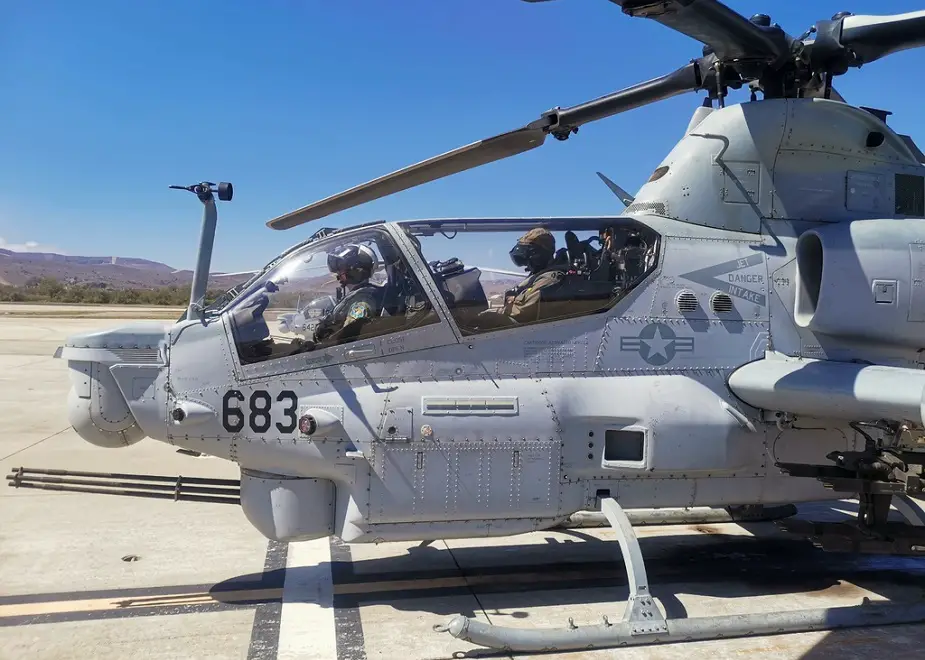Since July, a group of pilots and on-board technicians from the 22nd Helicopter Air Force Base in Náměště nad Oslavou have been training on the new types of UH-1Y Venom and AH-1Z Viper helicopters at the US Marine Corps Base Pendleton. In September, the initial theoretical training was replaced by the first practical flights.
Follow Air Recognition on Google News at this link

Air and ground crews from the Czech Air Force have begun training on UH-1Y and AH-1Z (pictured here) helicopters in the US (Picture source: Armáda ČR)
During theoretical training, soldiers acquired knowledge of helicopter construction, avionics and machine control.
The training also included preparing the crews for emergency situations. "We practiced the procedures of how to safely leave the cabin, how to last until the rescue or how to handle the pick-up itself," explains Major Marcel Kica, commander of the H-1 training group.
The theoretical part was supplemented by simulator training, ranging from mastering the simplest helicopter control procedures and controlling individual systems to the most complex ones.
Pilots also tried out complete innovations
Only a successful examination of the individual areas, the aviation regulations regarding the operation of these helicopters, emergency procedures and the rules for flying on the base authorized the soldiers to fly themselves.
In intense traffic, the pilots tried the so-called "hot refueling" or refueling on the ground with the engines running and the rotor rotating. Changes also awaited the soldiers in the "full glass cockpit" (modern multifunctional display) or in the use of the "moving map", which greatly simplifies the navigation of the helicopter.
In connection with conducting training flights over the sea, pilots are also exposed to a slight discomfort that they are not used to in our latitudes, namely flying in vests with life jackets and rescue equipment.
"The first flight experiences brought us the realization that steering does not require so much physical strength and is much more sensitive. We get used to differences such as opposite foot pedaling (opposite direction of rotation of the rotor), opposite work with correction ("throttle"), etc.," confided Major Kica.
 (Picture source: Armáda ČR)
(Picture source: Armáda ČR)
On-board technicians also undergo training
The UH1-Y crew always includes a crew chief. Even these specialists undergo comprehensive training focused on the material area, rules and organization of ground and air traffic in MCAS (Marine Corps Air Station) conditions. American instructors trained their Czech colleagues in the preparation of aviation technology on the helicopter stand. This included a pre-flight check, checking and topping up of all operating fluids, adjusting the configuration of the helicopter's cargo space, and a flight check, including packing the helicopter. The technicians were introduced to personal aviation material and the possibilities of its individual adaptation to each individual.
 Changes also awaited the soldiers in the "full glass cockpit" (modern multifunctional display) or in the use of the "moving map", which greatly simplifies the navigation of the helicopter. (Picture source: Armáda ČR)
Changes also awaited the soldiers in the "full glass cockpit" (modern multifunctional display) or in the use of the "moving map", which greatly simplifies the navigation of the helicopter. (Picture source: Armáda ČR)
















